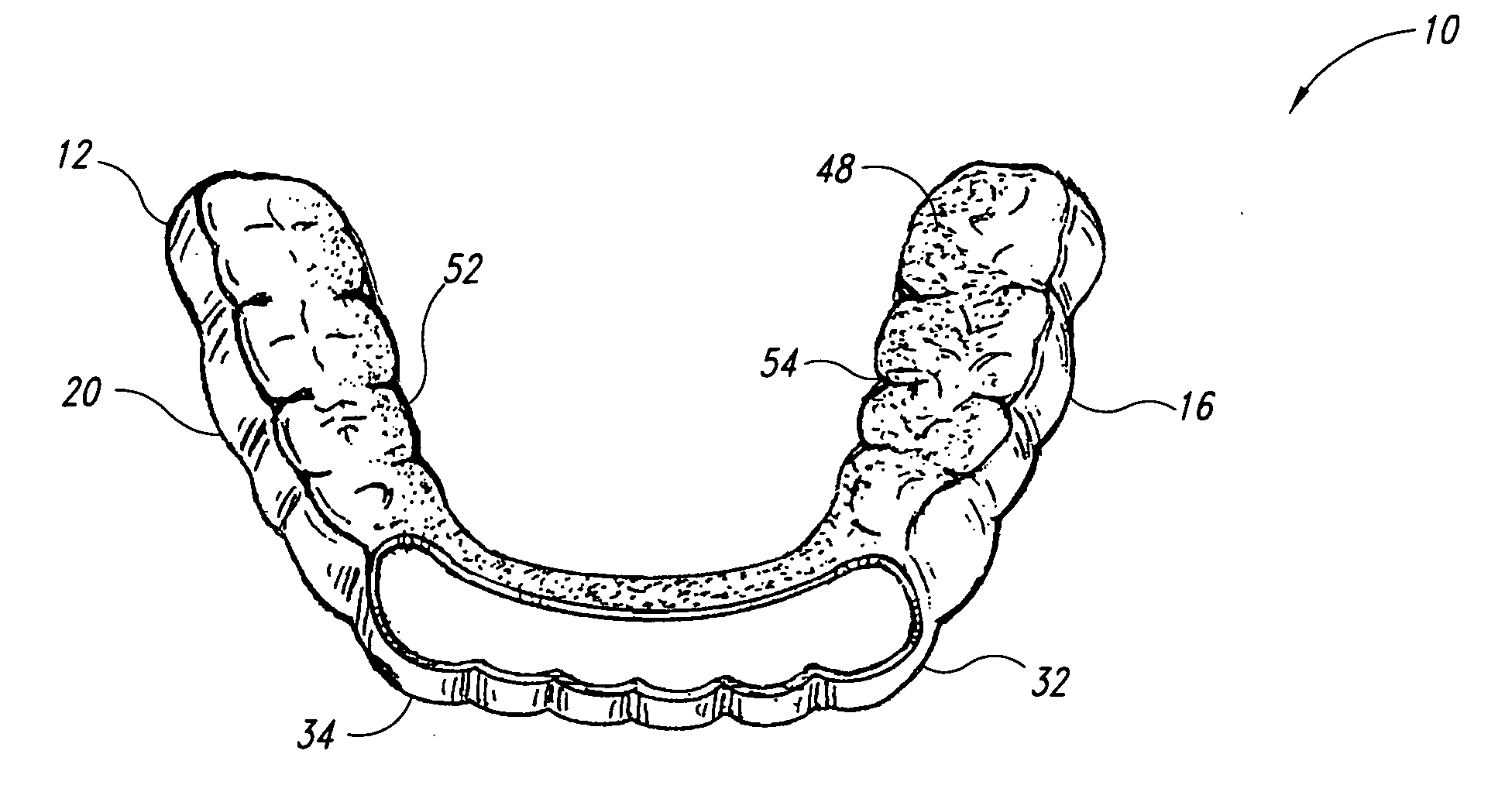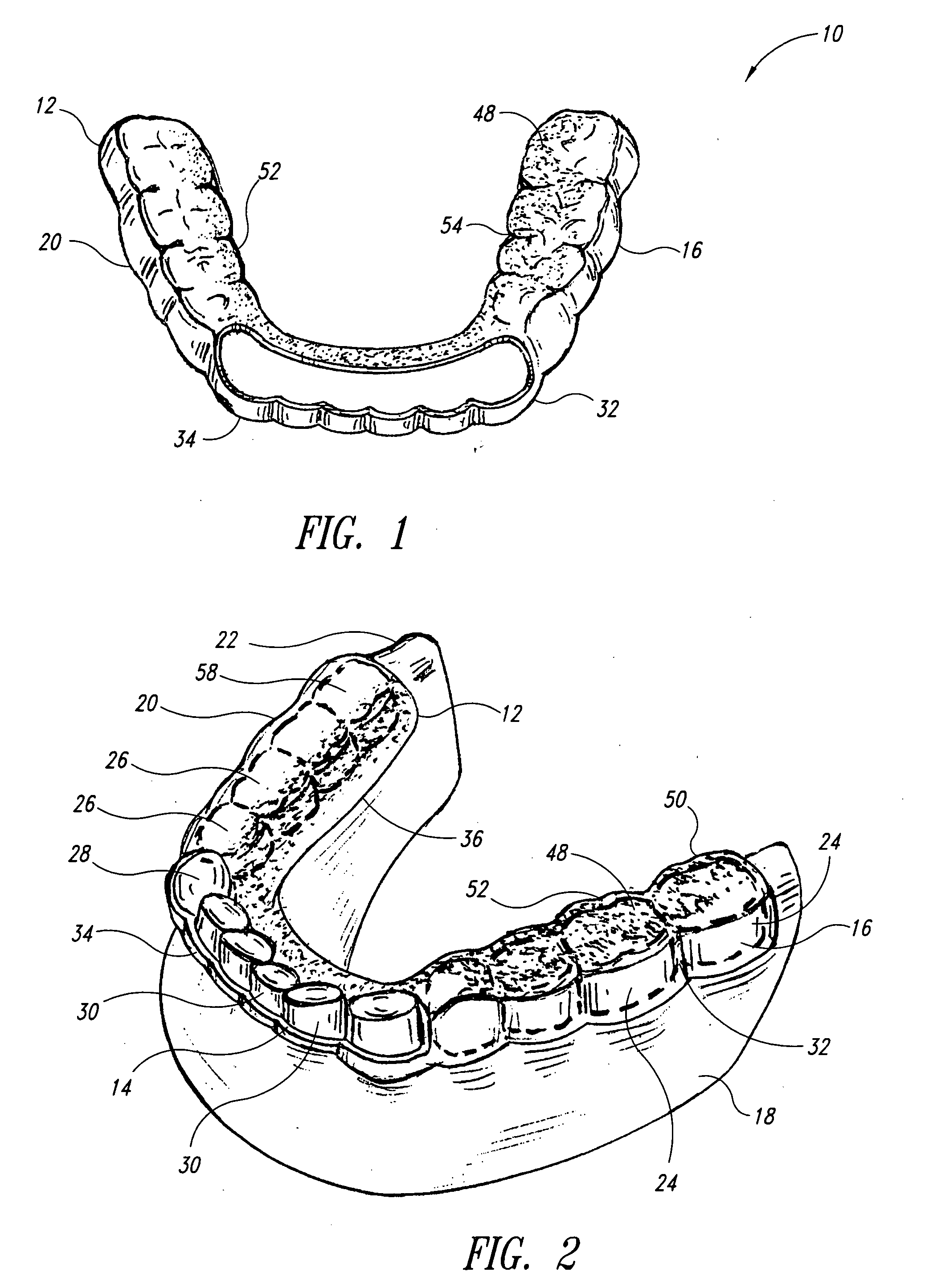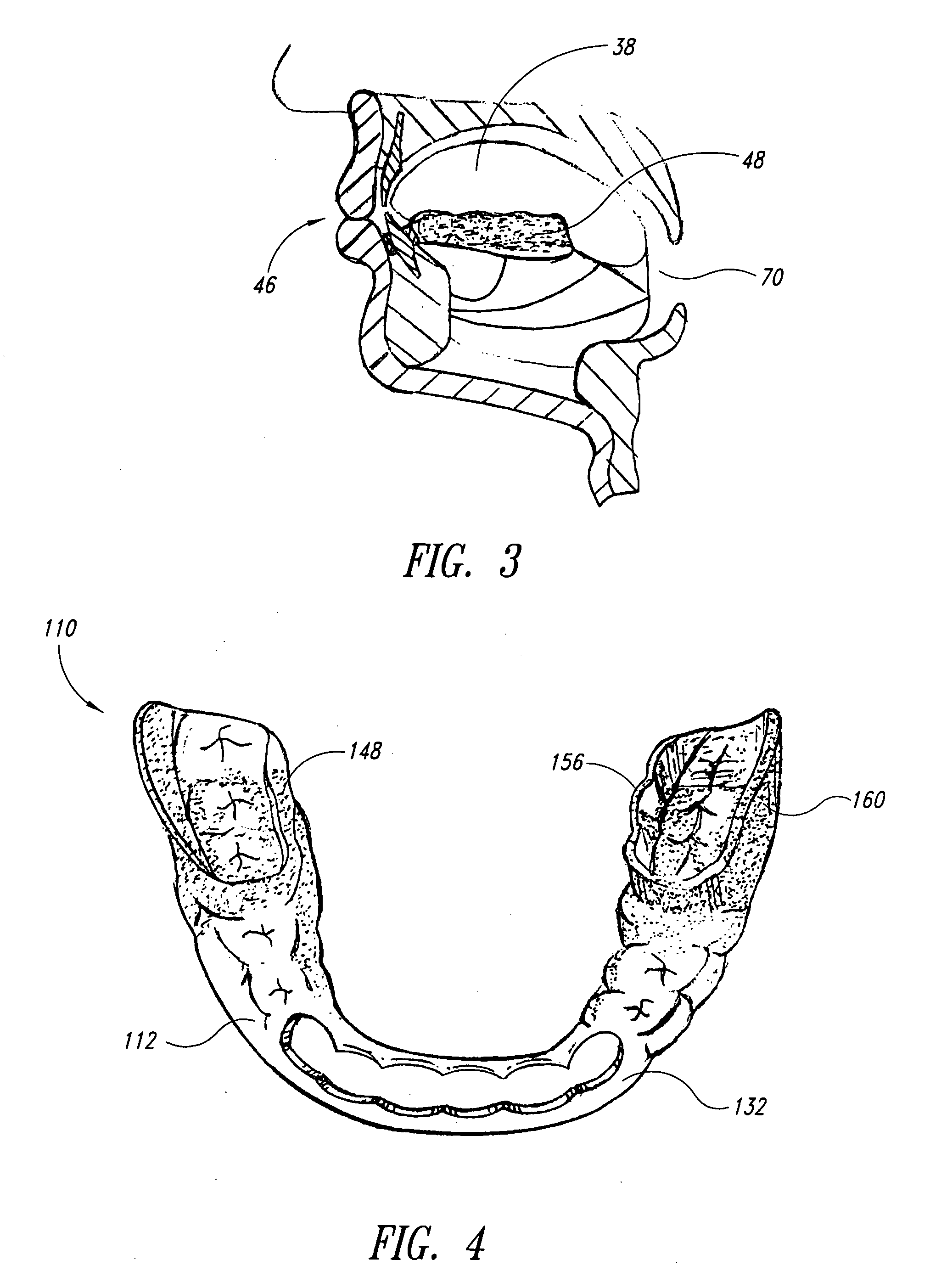Dental orthotic devices and methods for management of impaired oral functions and resultant indications
- Summary
- Abstract
- Description
- Claims
- Application Information
AI Technical Summary
Benefits of technology
Problems solved by technology
Method used
Image
Examples
first embodiment
[0025] Referring to FIGS. 1 and 2, in a first embodiment a dental orthotic 10 comprises a mandibular orthotic 12 configured to engage a lower arrangement of teeth, or lower dentition 14, of a user's mouth. The illustrated mandibular orthotic 12 includes a first side portion 16 positioned to engage a first side 18 of the lower dentition 14 and a second side portion 20 positioned to engage a second side 22 of the lower dentition. The first side portion 16 and the second side portion 20 may be placed over molars 24, bicuspids 26, cuspids 28 and incisors 30 in the lower arrangement of teeth 14. It is understood, however, that the first and second side portions 16,20 are designed to conform to at least one tooth on each side of the user's lower arrangement of teeth.
[0026] The mandibular orthotic 12 may be made of a pliable material, such as plastic or another suitable material. As shown in FIGS. 1 and 2, a wire32 made of metal or other suitable material may be added to a front portion 34...
second embodiment
[0051] Referring to FIGS. 4 to 6, a second embodiment the dental orthotic 110 of the present invention may also include a maxillary orthotic 156, which is located on an upper portion of the mandibular orthotic 112 for engagement with at least some of the teeth of the upper dentition. The maxillary orthotic 156 includes a first side portion 160, which is positioned to mate with an outer surface of a corresponding first side of the upper dentition (not shown), and a second side portion 166, which is positioned to mate with an outer surface of a second side of the upper dentition. The illustrated first and second side portions 160,166 are positioned to extend over a biting surface of the teeth. The illustrated maxillary orthotic 156 engages the most posterior two or three teeth of the upper arrangement of teeth. Depending on the teeth present in the user's mouth, the teeth covered are typically a second bicuspid, a first molar and a second molar. It is understood, however, that the fir...
PUM
 Login to View More
Login to View More Abstract
Description
Claims
Application Information
 Login to View More
Login to View More - R&D
- Intellectual Property
- Life Sciences
- Materials
- Tech Scout
- Unparalleled Data Quality
- Higher Quality Content
- 60% Fewer Hallucinations
Browse by: Latest US Patents, China's latest patents, Technical Efficacy Thesaurus, Application Domain, Technology Topic, Popular Technical Reports.
© 2025 PatSnap. All rights reserved.Legal|Privacy policy|Modern Slavery Act Transparency Statement|Sitemap|About US| Contact US: help@patsnap.com



